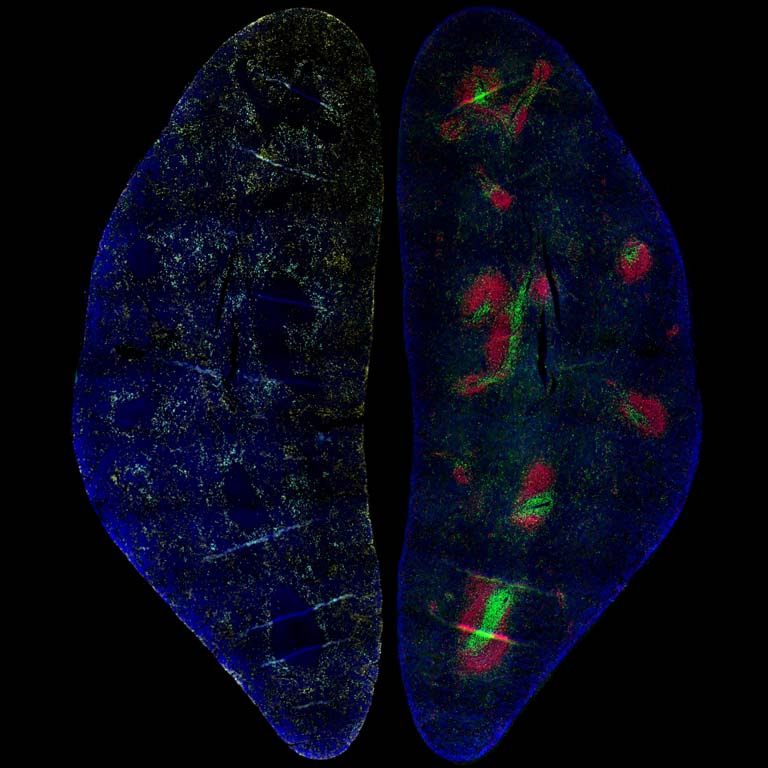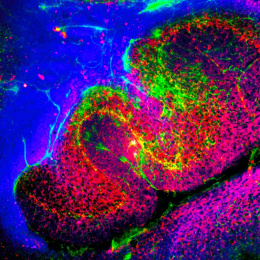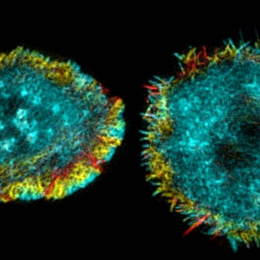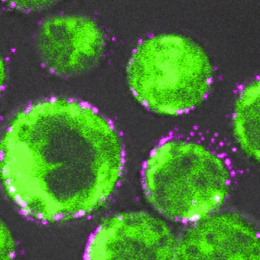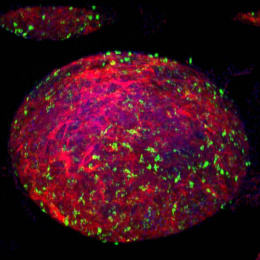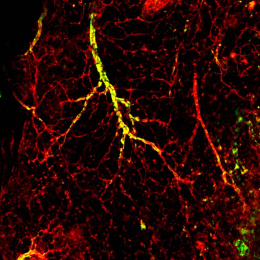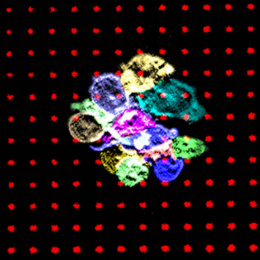Spleen Cells Respond to Injury
Spleen Cells Respond to Injury
Kaitlyn Sadtler, Robert Langer, Daniel G. Anderson
Koch Institute at MIT, MIT Department of Chemical Engineering, Institute of Medical Engineering and Science
The image shows two cross-sections of a spleen. This spleen comes from a mouse that had a skin injury that was treated with a small molecule compound to inhibit scarring. We are looking at cells of the innate (left) and adaptive (right) immune system. The distribution of these cells within a tissue can tell us things about how the cells are responding to the injury and what types of cells are present within the spleen, which is a central organ of your immune system.
We took this image to see if there were systemic effects of drug treatment of a skin injury. Here, we see that B cells (green) and T cells (red) have formed their follicles tightly around vasculature, which suggests that there has been a systemic signal from the injury site. We also see many innate immune cells such as neutrophils (cyan) and other myeloid cells (yellow) that are spread throughout the spleen, encircling the dense areas of adaptive immune cells.
